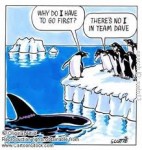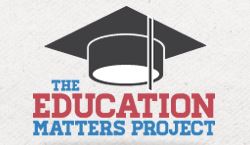Teamwork During Kellogg Orientation
 We’ve all heard the saying before. That a team working together can accomplish a lot more than the sum of its individual capabilities. Well that’s definitely true here at Kellogg for orientation, where everything we’ve done so far has been in teams. One example is our section’s involvement in Kellogg’s section competition, where we compete all week against all the other sections in a series of events. Another example is the section showcase, where we’re working together to create a ten minute skit to put on in front of the school. So far, I’ve found the team activities fun as they’ve not only provided a unique venue for collaboration but also for getting to know my classmates and having interesting discussions to foster close ties before school begins.
We’ve all heard the saying before. That a team working together can accomplish a lot more than the sum of its individual capabilities. Well that’s definitely true here at Kellogg for orientation, where everything we’ve done so far has been in teams. One example is our section’s involvement in Kellogg’s section competition, where we compete all week against all the other sections in a series of events. Another example is the section showcase, where we’re working together to create a ten minute skit to put on in front of the school. So far, I’ve found the team activities fun as they’ve not only provided a unique venue for collaboration but also for getting to know my classmates and having interesting discussions to foster close ties before school begins.
Like most endeavors at Kellogg, these activities are both more fun and more work than most of us expected. For the section showcase we’ve put in nearly a dozen hours so far planning our skit, orchestrating the music and the actors, and also figuring out how to bring everything together. It’s definitely been a fun challenge.
Part of this is because our section is so big. Working together in a group of 100 people is new for most of us. On one hand it’s been fun because we get to know a lot of people, see a lot of different working styles, and incorporate a larger variety of ideas and perspectives. On the other hand, working in a larger group means that we also have an element of chaos, because diverse points of view always arise and we’re forced to come up with solutions quickly despite dozens of competing ideas.
Scholarly research has long suggested that smaller teams perform better than big ones.  In most cases, that’s because it’s easier to get everyone involved, smoother to incorporate everyone’s ideas, and everyone feels like they take part in the team’s mission. Similarly, with smaller teams it’s also easier for everyone to get more deeply involved and really provide a higher quality engagement. In fact research suggests that the ideal teams have less than ten people, and that the best leadership teams have five or less people.
 Despite the research though, it is surprising how well our section of 100 people has worked together so far. From the outset we started orientation and competed section cheering competition. Despite having the biggest team, we won first place in the first event.  We’ve also worked efficiently together to take part in other events, and our section showcase seems to be coming along quite well too.
Despite the research though, it is surprising how well our section of 100 people has worked together so far. From the outset we started orientation and competed section cheering competition. Despite having the biggest team, we won first place in the first event.  We’ve also worked efficiently together to take part in other events, and our section showcase seems to be coming along quite well too.
But despite our initial victory, it has become increasingly challenging as the week continues to move forward. People are starting to get tired. We’ve started getting reading and other assignments for our MORS class. Some people have other priorities outside of school they need to take care of. And as always, time is increasingly getting more limited, especially as we become busier with section activities throughout the week.
The experience in orientation so far has pushed our team beyond our comfort zone, at least for an orientation setting, but we’ve all worked well together and stepped up to each challenge. Upon reflection, it’s clear that all of our success has been the result of keeping a focus on the element of teamwork and leveraging everyone to help out as much as possible. And that has not only allowed us to do well in some of the competitions but more importantly it has also allowed us to form bonds with our classmates and future colleagues. Over the next two years at kellogg, I look forward to taking part in more teamwork activities and meeting more of my classmates along the way.
5 Comments to Teamwork During Kellogg Orientation
I love to see organisations doing this kind of team building!
I wonder if you would consider posting this story of your team building activity on my relatively new website. Please go to http://www.team-building-bonanza.com and followthe ‘add your team building stories’ link. Thanks, Alison.
@Ali from Team Building Bonanza Thanks for your comment Alison. I’ll be sure to have a look at your site shortly. Take care, Jeremy
Well, now B school sounds like more fun than law school.
But does B school have the socratic method!?
@idwsj Hi IDWSJ, in the “traditional” sense, you are correct, business school is shaping up to be more fun than law school. And we’ve definitely started utilizing the case method in class, but I’ll plan to respond to your question again once we’ve got a few more classes under our belts.
[…] NYU ’12 Nistha enjoyed her first two weeks at NYU Stern and shared a funny video about the MBA application process. IMD ’11 Howie found the apartment/furniture policy of his new place a little worrisome. IESE ’12 Hari recounted a very positive airline experience that involved getting to carry an extra bag for no extra cost and a free upgrade! Tepper ’12 Shubha provided readers with his definition of an MBA. MIT ’12 Paul looked back on where he was last year and thought about the choices he made and how they panned out…for the good, it seems. Kellogg ’12 Jeremy recounted his teamwork experiences during the school’s orientation. […]







September 5, 2010